
Photographs
A guide to handling, storing, and displaying photographs safely to ensure they last as long as possible.
Download a PDF of the guide
This is the web version of the Caring for taonga — photographs guide.
You can download the PDF version Caring for your taonga – photographs (pdf, 1MB)
Caring for Taonga – Photographs
Photographs are the visual memories of our past. They depict our ancestors, landscape and memories. Many of our photographs are taonga.
Photographs – whether prints, negatives, or slides – are vulnerable to damage. The way we handle, store, and display photographs has a big impact on how long they last and their condition. Digital image files also need careful storage.
Handling photographs
Handle photographs with care. Poor handling is responsible for a lot of damage to photographs, from marks to tears to creases.
Always handle photographs by their edges to avoid leaving fingerprints. The oils and salts in our fingertips leave permanent marks on photographs and contribute to fading.
If a photograph is torn or in pieces, keep it flat in a folder or sleeve by itself, rather than trying to repair it.
Materials like sticky tape and masking tape cause fading and staining. Over time the adhesive will dry up, letting the photo fall apart again.
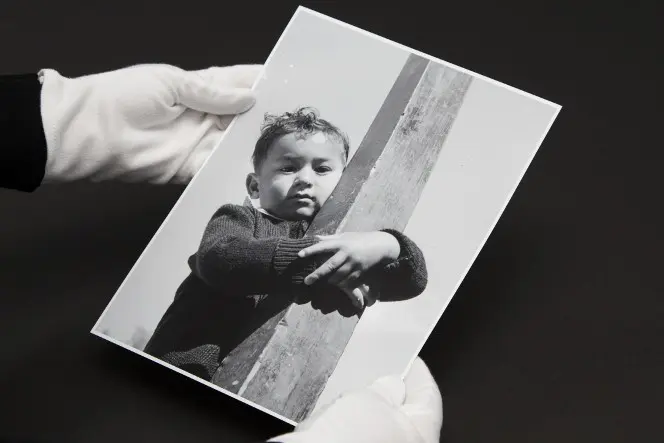
Unidentified Māori boy, Rotorua, 1940s. Ref: 1/4-000849-F. Alexander Turnbull Library.
Storing photographs
Store photographs carefully, away from light, heat and water / Āta tiakina, kia pōuri, kia maroke, kia kaua e pāwera
Photographs can be damaged by light, heat, water, pollution and insects. Take care of them using these commonsense storage techniques.
The best place to store your photographs is somewhere clean, cool, dark, dry, and well ventilated. Keep photographs somewhere where they will not constantly be moved or disturbed.
Places to avoid storing photographs:
Garages or sheds: they are often damp, have insects and may magnify temperature changes (such as a hot day followed by a cold night)
On the floor: puts photos at risk of water damage if there is a flood
Hot water cupboards: the combination of heat and moisture can cause mould on photographs
Storage materials
You can store photos in boxes, folders, albums, and sleeves, made out of either paper or plastic. Where possible, use conservation-quality materials to store photographs.
Several companies specialise in conservation-quality materials suitable for storing photographs. Some of these companies are listed below.
Some commercially available materials advertised as being suitable for the storage of photographs are actually damaging. In particular, avoid anything made out of PVC (a low-quality plastic) or anything that puts the photograph in direct contact with an adhesive, like sticky tape or glue.
Avoid laminating unique or valuable photographs. Once photographs have been sealed in the plastic they cannot be removed. Over time the material used to laminate the photographs can damage them.
Suitable materials:
acid-free card and paper
polyester (PET, recycle code 1), for example Mylar
polypropylene (PP, recycle code 5)
polyethylene (PE, recycle code 2 or 4)
Damaging materials:
low-quality cardboard and paper
polyvinyl chloride (PVC, recycle code 3)
metal pins and paper clips
spray adhesive
sticky tape, masking tape, packing tape, mending tape and similar
rubber bands
glassine
Store your most valuable or unique photographs in the best-quality material, especially materials that are in direct contact with photographs.
Some museums, archives and marae are eligible for funding for preservation of their photographs. See funding agencies below.
Photograph albums
Good photograph albums provide excellent protection for photographs. Poor ones can cause damage.
Choose a photograph album where the photographs can be easily removed, for example albums with plastic sleeves or with corners for the photos to be placed in.
Do not use magnetic or self-adhesive albums (albums that have sticky cardboard pages and plastic covers that cling to the photos). Adhesive on the pages will damage the photographs. It can also be difficult to remove the photographs once they are stuck to the pages.
If your photographs are already in an album, it is best to leave them this way. Removing the photographs may cause more damage. The original sequence of the photographs may also be lost.
Storing negatives
Negatives are very important and should be carefully looked after. If anything happens to the print you can always have another copy made from the negative.
It is best to store negatives separately from prints, ideally in individual sleeves. Rubbing together can easily cause scratching.
Glass negatives require extra care. They can be easily broken. If you have glass negatives in your collection, store them upright, on their longest edge, in a sturdy box and prevent scratching by placing them in individual sleeves.
Recording information
Keep a record of information about photographs, such as names and dates/ Tuhia ngā kōrero mō ia whakaahua, ko ngā ingoa, ko ngā rangi
It is important to keep any information about the photograph, such as:
who the photograph is of
where it was taken
when it was taken
who the photographer was.
This information can be written in the photograph album, on a photocopy of the image, on the backing board of the frame, or in a separate ledger or database.
It is not necessary to write on the photograph. If you do:
write on the back of the photograph in the border area or near the edge
use a soft pencil like a 2B (pen or felt tip marks could seep through to the front of the photograph)
print softly.
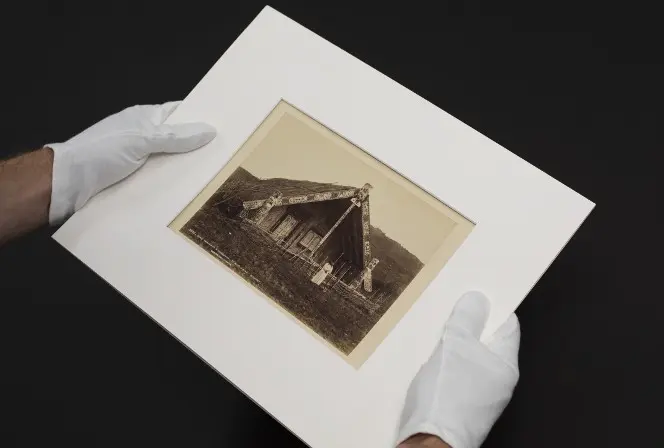
Exterior of the whare belonging to King Tawhiao at Te Kuiti, 1885. Ref: ">PA7-36-24
Displaying photographs
Make sure the way you display photographs does not cause them any harm / Āta whakaatuhia ngā whakaahua, kia kore ai e whara
You can prolong the life of your photographs by taking care over the way they are displayed.
You should avoid:
hanging photographs in sunny places (this will make them fade more quickly
hanging photographs over fireplaces (high temperatures and smoke will cause damage over time)
putting pins directly through photographs
using self-adhesive tape, glue or paste in direct contact with a photograph.
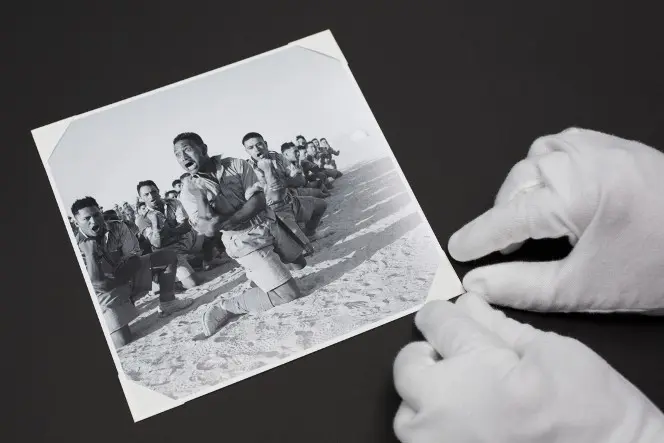
Māori Battalion performing a haka, Egypt, 24 June 1941. Ref: DA-01229-F
Photographs in geothermal areas like Rotorua are at risk of fading and staining as the sulphur content in the air attacks the silver that makes up the image of many black-and-white photographs. it is important to have photographs in geothermal areas well framed to protect them from these conditions.
Framing
Framing photographs improves their appearance and helps to protect them.
If you are using a professional framer, ask them to do it to ‘conservation standards’. This is more expensive but will give greater protection to the photograph.
It is important there is a gap between the glass of the frame and the photograph – otherwise the photograph may stick to the glass.
Hang photographs in places where they will not be knocked or bumped. Use strong hanging devices and hang framed photographs securely on the wall. Hanging devices should be in proportion to the size of the frame. Very heavy frames require cleats or extra heavy D-rings. A good picture framer can help with this.
Have copies made of photographs that are special due to their age, rarity or value / Tāruahia ngā tino whakaahua, arā ngā whakaahua kōtuku rerenga tahi
Photographs in marae
Photographs on marae are often the only image a whānau or hapū might hold of their tipuna or ancestor. Preserve these unique images by:
making a list of all of the photographs in the marae
recording as much information about each photograph as possible – name of person, when taken, where taken, photographer
if appropriate, having high-quality copies made so that these can be on display rather than the original
ensuring all photographs on display have a sturdy frame with glazing (glass or Perspex)
using strong and secure hanging devices on the back of the frame
not hanging photographs in sunny places or in damp places
keeping photographs in the wharekai as far from the kitchen as possible – running water and steam from boiling pots create a moist environment that may cause mould and other damage to photographs
checking photographs regularly, perhaps every six months or so, looking for signs of mould or insects.
Preventing damage from disasters
Taking small precautions like keeping photographs off the floor and away from sources of water will help reduce risk of damage caused by floods.
If photographs are damaged by water in an event like a flood they can usually be salvaged. To prevent further damage:
act as quickly as possible – mould can develop in a very short space of time
dry wet photographs face up on a clean flat surface in a room with good air circulation; use a cool fan to promote air circulation if necessary
rinse photographs gently in clean water if they are covered with silt or debris from floodwaters.
Reduce the risk of damage by keeping your storage space clean and uncluttered to discourage pests.
Install smoke alarms to reduce the risk of fire, and sprinklers where possible. Contact the New Zealand Fire Service for guidance on fire safety issues.
Contact a conservator if collections are damaged. They may still be salvageable. A list of conservators is available on the New Zealand Conservators of Cultural Materials Pu Manaaki Kahurangi website.
Need help?
You can get more detailed professional advice in caring for your photographs from the National Preservation Office.
Email — preservation@dia.govt.nz
Phone — 04 474 3000
Related content
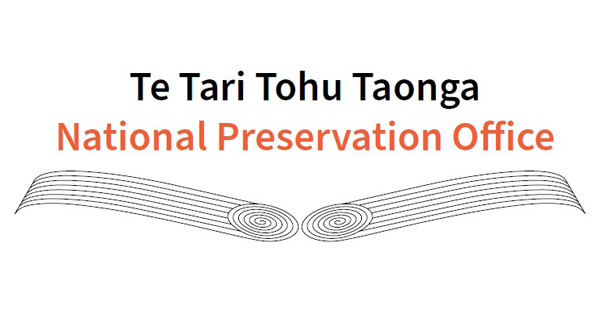
Help from the National Preservation Office
Find out how the National Preservation Office can help you. There is also a list of other conservation organisations and services that may be of assistance.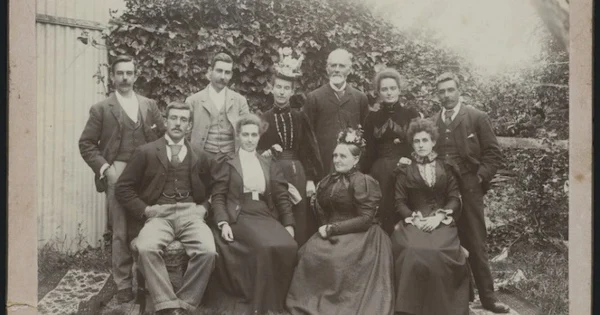
Family collections
Family collections often consist of precious but fragile items: letters, newspaper collections, certificates and scrapbooks. This guide gives advice on protecting these collections.Feature image at top of page: Unidentified Māori boy, Rotorua, by John Dobree Pascoe, 1940s. Ref: 1/4-000849-F. Alexander Turnbull Library.